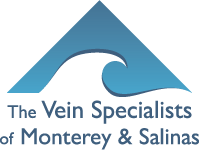Frequently Asked Questions
What Are Varicose Veins?
The term ‘varicose veins’ is often used to describe everything from smaller, spider veins (red or blue veins on the surface of the skin) up to true varicose veins (swollen, bulging veins with a rope-like appearance). Varicose veins are quite common, with one in three women and one in five men experience problems. Varicose vein symptoms can include swelling, tiredness, heavy feeling, leg fatigue, leg pain, as well as burning and itching sensations.
What Causes Varicose Veins?
Varicose veins are almost always associated with venous reflux. This occurs when the valves in the leg veins don’t work well, and backward blood flow causes pooling in the lower leg. Without treatment, the pressure this creates may increase over time and cause additional varicose veins and symptoms. People with a family history and who are older, obese or are pregnant may be at increased risk of developing varicose veins.
Can Varicose Veins Be Prevented?
It is unclear if varicose veins can be prevented, but certain actions may help limit the disease’s progression and symptoms. Routine exercise, maintaining a normal weight, avoiding excessively long periods of standing or sitting, and the use of compression stockings may all help alleviate symptoms.
What Happens if I Don’t Treat the Vein?
If you have underlying venous disease (e.g., venous reflux), the pressure created by backflow of blood and pooling in the lower legs may create a progressive condition that only gets worse with time. This may lead to additional spider veins and varicose veins, and in some cases can lead to swelling and venous ulcers at the lower calf and ankle. Only a trained vein specialist can effectively evaluate your spider veins or varicose veins.
Will My Spider Veins or Varicose Veins Reoccur, Even With Treatment?
Sometimes the same factors that helped to cause your first spider veins or varicose veins (e.g., family history, age, obesity, female hormones, etc.) will make you predisposed to develop additional vein conditions. If a specific vein is properly treated, it usually does not recur, but it is possible that other veins may become diseased. This is why it is important that even if you have what appear to be simple, cosmetic spider veins, that you consult a vein specialist who can determine if you have an underlying condition (venous reflux). If you do, and you don’t treat the cause of the problem, additional spider veins or varicose veins are likely to develop.
Won’t I Need That Vein?
Procedures like sclerotherapy and Closure act to close down a faulty vein. The vein being closed is dysfunctional and is allowing blood to flow backwards and pool, so leaving it open only makes things worse. The body contains numerous other healthy veins that are still functional and can easily take up the additional flow. Treatment of the faulty veins almost always results in improved blood flow in the overall vein system.
What Is the Cost of Vein Treatment?
Procedures like ‘an endovenous ablation or closure and ambulatory phlebectomy, when shown to be medically necessary, are commonly covered by Medicare and insurance providers. Sclerotherapy for spider veins is generally considered a cosmetic procedure and usually not covered. Consult your local insurance provider to determine your exact eligibility and coverage as well as cost.
Why Me?
Heredity is the number one contributing factor causing varicose and spider veins. Women are more likely to suffer from these abnormal leg veins. Up to 50% of American women may be affected. Hormonal factors include puberty, pregnancy, menopause, the use of birth control pills: estrogen and progesterone, affect the disease. Other factors that can accelerate and aggravate the appearance of veins, beyond gravity and age, include leg injury, obesity, lack of exercise, weight fluctuation, constriction and long periods of sitting or standing.
When and How Are Veins Treated?
The most commonly asked questions are: Do veins require treatment and what treatment would be best? At the Vein Specialists success in the treatment of varicose and spider veins is due to our comprehensive approach. Without treatment venous disease will slowly progress, and sometime lead to more serious conditions.
After obtaining a history and performing a physical exam, the patient undergoes a noninvasive Doppler ultrasound and color ultrasound imaging to determine areas of venous disease (dilated veins, faulty valves, and area of clot). Based on the above information, an individual treatment plan is formulated and discussed with the patient. Veins that are cosmetically unappealing or cause pain or other symptoms are prime for treatment.
